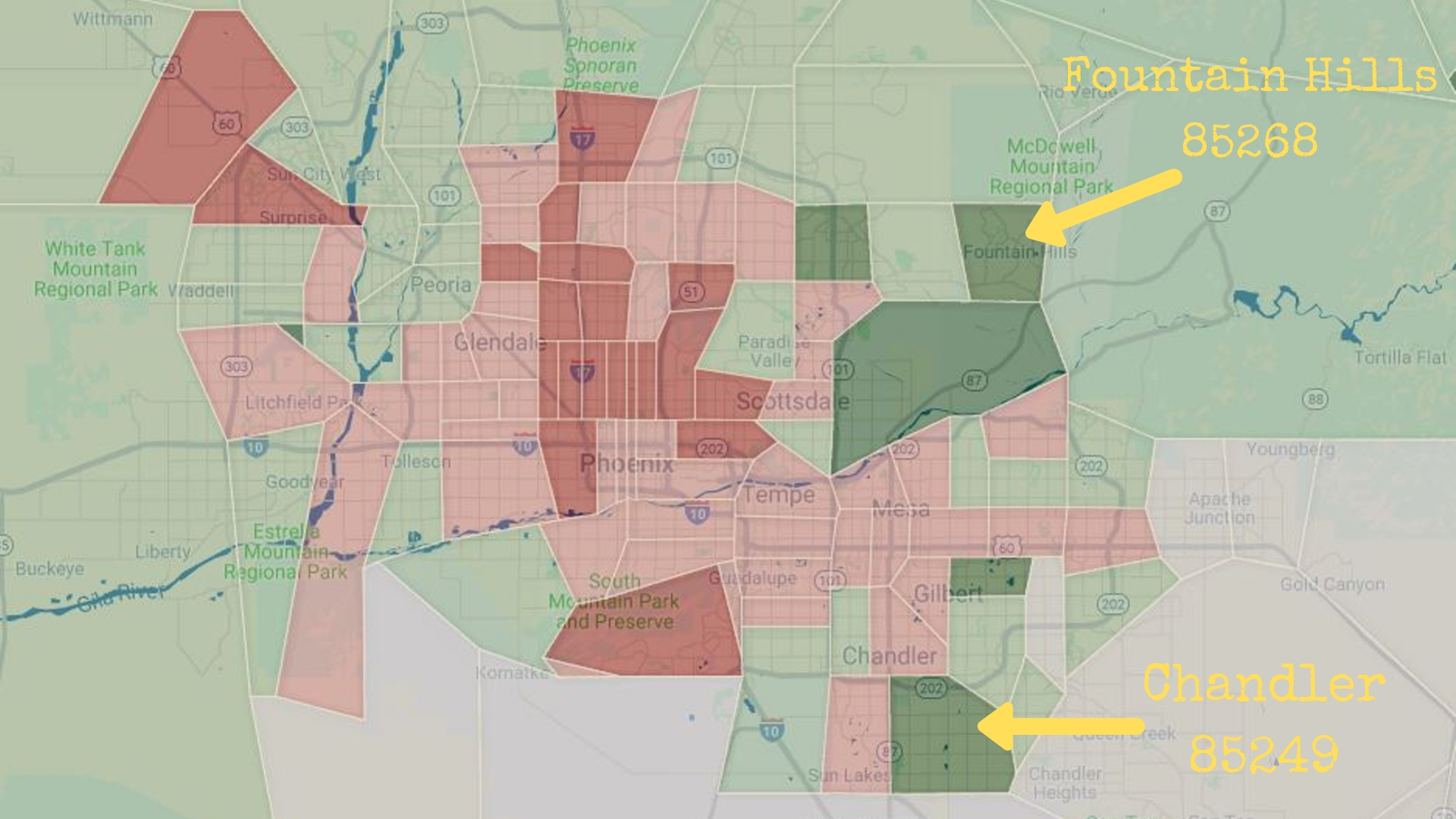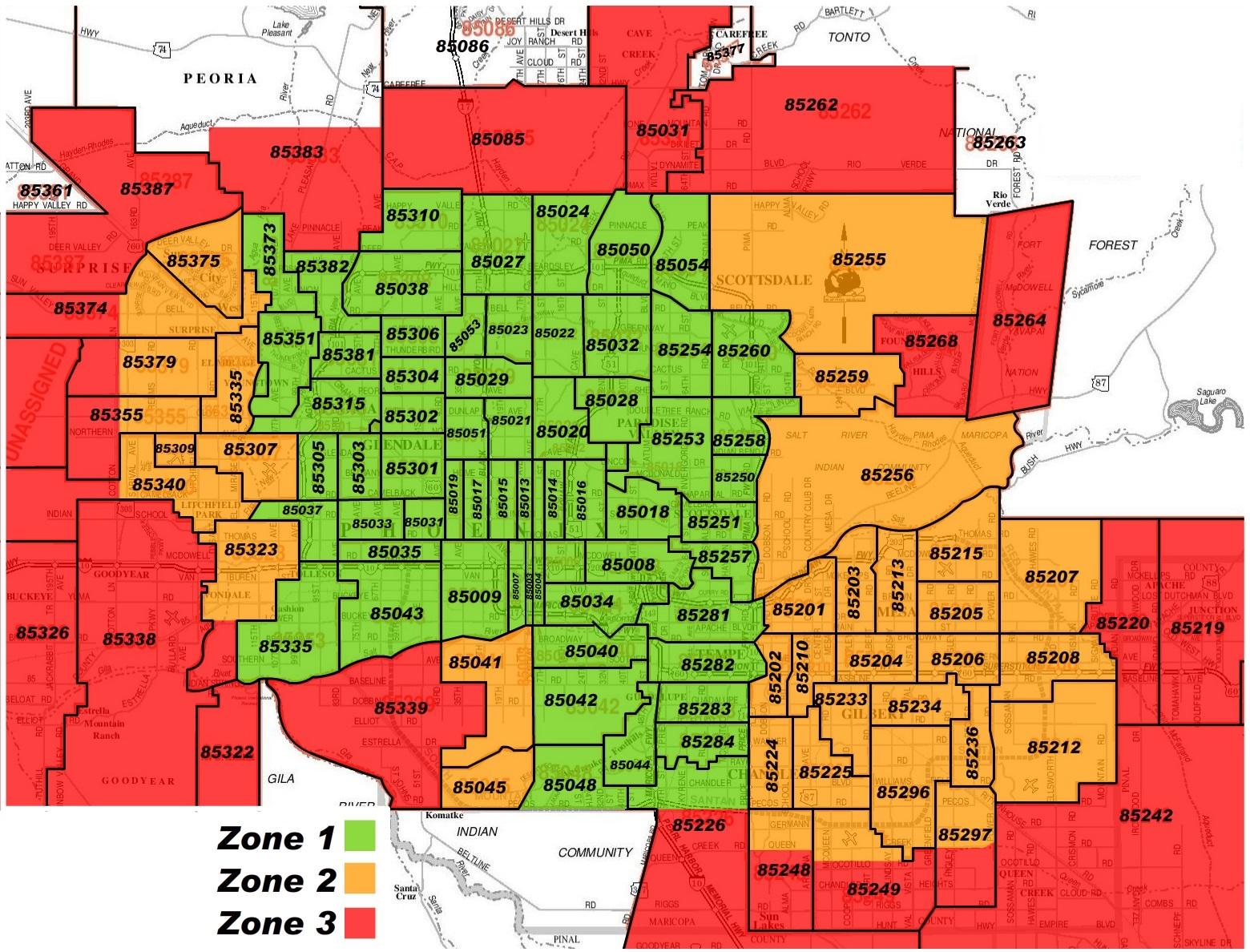Area Code For Phoenix Arizona: A Comprehensive Guide
When it comes to understanding the area code for Phoenix Arizona, it's essential to dive deep into the telecommunications landscape of the region. The area code system plays a vital role in connecting millions of people across the United States. Phoenix, as one of the fastest-growing cities, has its unique set of area codes that facilitate seamless communication within the state and beyond.
With the rise in population and technological advancements, the demand for phone numbers has significantly increased. This article will provide a detailed overview of the area code for Phoenix Arizona, ensuring you understand the history, variations, and future developments related to this essential telecommunications aspect.
Whether you're a resident, a business owner, or simply someone interested in telecommunications, this guide will serve as a valuable resource. Let’s explore everything you need to know about the area code for Phoenix Arizona.
Read also:Little Elf Cutter Net Worth Exploring The Success And Achievements Of An Influential Creator
Table of Contents
- History of Area Codes in Phoenix Arizona
- Current Area Codes for Phoenix Arizona
- Understanding Overlay Area Codes
- Geographical Coverage of Area Codes
- Importance of Area Codes for Businesses
- Impact of Technology on Area Codes
- Future Trends in Area Codes
- Common Questions About Area Codes
- Regulations Governing Area Codes
- Conclusion
History of Area Codes in Phoenix Arizona
The area code system in the United States dates back to the 1940s when the North American Numbering Plan (NANP) was introduced. This system was designed to streamline long-distance calling and improve communication efficiency. Phoenix Arizona, like many other cities, adopted this system to meet the growing demand for phone numbers.
In the early days, Phoenix had a single area code, which was sufficient for the population and infrastructure at the time. However, as the city expanded, additional area codes were introduced to accommodate the increasing number of residents and businesses.
Understanding the historical context of area codes in Phoenix Arizona provides insight into how the telecommunications landscape has evolved over the years.
Early Development of Area Codes
When the NANP was implemented, Phoenix Arizona was assigned the area code 602. This code served the entire city and its surrounding areas for several decades. The introduction of this code marked the beginning of modern telecommunications in the region.
As the city grew, so did the need for more phone numbers. This led to the development of additional area codes, which we will explore in the next section.
Current Area Codes for Phoenix Arizona
Today, Phoenix Arizona is served by multiple area codes to meet the demands of its large and diverse population. The primary area codes include 602, 480, and 520. Each of these codes covers specific regions within the state, ensuring efficient communication for residents and businesses.
Read also:Colin Morgan The Rising Star In The Entertainment Industry
Beyond these primary codes, there are overlay codes that have been introduced to address the growing need for phone numbers. Understanding the current area codes for Phoenix Arizona is crucial for anyone living or doing business in the region.
Primary Area Codes
- 602: Originally assigned to Phoenix, this code covers the central and western parts of the city.
- 480: Introduced to serve the eastern suburbs of Phoenix, including cities like Chandler and Mesa.
- 520: Covers areas further south, such as Tucson, but also extends to some parts of the Phoenix metropolitan area.
Understanding Overlay Area Codes
Overlay area codes are additional codes introduced to existing regions to provide more phone numbers without changing the boundaries of the original area codes. In Phoenix Arizona, overlay codes have been implemented to address the rapid growth and expansion of the city.
These codes allow for the addition of new phone numbers without requiring residents and businesses to change their existing numbers. This approach helps maintain continuity and reduces the disruption caused by changing area codes.
Benefits of Overlay Area Codes
Overlay area codes offer several advantages, including:
- Maintaining existing phone numbers for residents and businesses.
- Providing a seamless transition for new phone number assignments.
- Ensuring efficient communication without geographical limitations.
Geographical Coverage of Area Codes
The geographical coverage of area codes in Phoenix Arizona is designed to align with the city's growth patterns and population distribution. Each area code serves specific regions, ensuring that communication needs are met efficiently.
For instance, the 602 area code primarily covers the central and western parts of Phoenix, while the 480 area code serves the eastern suburbs. Understanding the geographical boundaries of these codes is essential for anyone needing to make or receive calls in the region.
Geographical Boundaries
The boundaries of area codes in Phoenix Arizona are determined by the North American Numbering Plan Administration (NANPA). This organization ensures that area codes are assigned and managed effectively across the United States.
Residents and businesses in Phoenix Arizona can refer to the NANPA website for detailed information on the geographical coverage of each area code.
Importance of Area Codes for Businesses
For businesses operating in Phoenix Arizona, area codes play a crucial role in establishing a local presence and building trust with customers. Having a local area code can enhance credibility and improve customer engagement.
Additionally, businesses can leverage area codes to target specific geographic regions with their marketing efforts. This strategic approach can lead to increased sales and customer loyalty.
Marketing Strategies Using Area Codes
Businesses in Phoenix Arizona can implement the following strategies to maximize the benefits of area codes:
- Use local area codes in advertising to connect with nearby customers.
- Implement geotargeting techniques to reach specific geographic areas.
- Monitor call data to analyze customer behavior and preferences.
Impact of Technology on Area Codes
Advancements in technology have significantly impacted the area code system in Phoenix Arizona. The rise of mobile phones and VoIP (Voice over Internet Protocol) services has changed how people communicate and use phone numbers.
Despite these changes, area codes remain an essential component of the telecommunications infrastructure. They continue to play a vital role in connecting people and businesses across the region.
VoIP and Area Codes
VoIP technology allows users to make calls over the internet, often bypassing traditional area code restrictions. However, many VoIP providers still assign area codes to their services to maintain a local presence and comply with regulatory requirements.
This integration of technology with the area code system highlights the ongoing evolution of telecommunications in Phoenix Arizona.
Future Trends in Area Codes
As Phoenix Arizona continues to grow, the demand for phone numbers is expected to increase. This trend will likely lead to the introduction of new area codes and overlay codes to meet the needs of residents and businesses.
Additionally, advancements in technology may further influence the role of area codes in telecommunications. Staying informed about these trends will help individuals and businesses adapt to the changing landscape.
Predictions for Area Code Expansion
Experts predict that the following trends will shape the future of area codes in Phoenix Arizona:
- Increased use of overlay codes to accommodate population growth.
- Integration of technology with traditional area code systems.
- Continued importance of local area codes for businesses and residents.
Common Questions About Area Codes
Many people have questions about area codes in Phoenix Arizona. Below are some frequently asked questions and their answers:
- What is the area code for Phoenix Arizona? The primary area codes are 602, 480, and 520.
- Why are there multiple area codes in Phoenix? The city's growth has necessitated additional codes to meet the demand for phone numbers.
- Will my phone number change if a new area code is introduced? Typically, existing phone numbers remain unchanged, while new numbers are assigned using the new code.
Regulations Governing Area Codes
The Federal Communications Commission (FCC) and the North American Numbering Plan Administration (NANPA) regulate area codes in the United States. These organizations ensure that area codes are assigned and managed effectively across the country.
In Phoenix Arizona, compliance with these regulations is essential for maintaining a reliable and efficient telecommunications system.
Compliance with FCC and NANPA
Residents and businesses in Phoenix Arizona can stay informed about area code regulations by visiting the FCC and NANPA websites. These resources provide valuable information on current and upcoming changes to the area code system.
Conclusion
In conclusion, understanding the area code for Phoenix Arizona is crucial for anyone living, working, or doing business in the region. From the historical development of area codes to their current and future applications, this guide has provided a comprehensive overview of the topic.
We encourage readers to share their thoughts and questions in the comments section below. Additionally, feel free to explore other articles on our website for more insights into telecommunications and related topics.
Remember, staying informed about area codes and telecommunications trends will help you adapt to the ever-changing landscape of modern communication.
Source: Federal Communications Commission (FCC), North American Numbering Plan Administration (NANPA)

